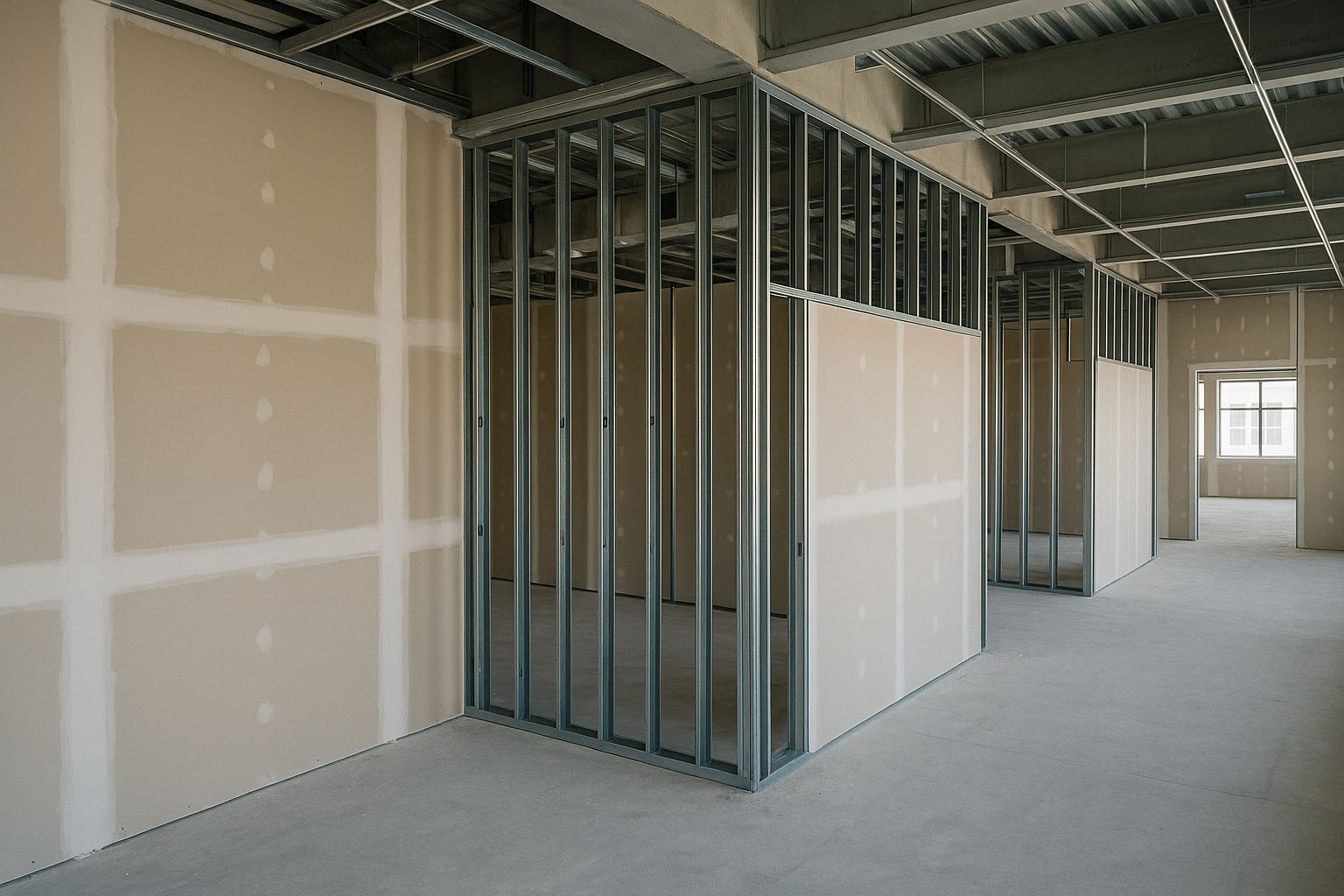
Temporary walls and enclosures are often overlooked in drywall estimates, but they represent real cost, coordination, and compliance obligations. From dust partitions on active job sites to ICRA (Infection Control Risk Assessment) enclosures in healthcare settings, these assemblies require careful planning and pricing. For Architects, Engineers, and General Contractors, understanding how to estimate temporary drywall accurately is essential for schedule control, risk mitigation, and budget alignment.
Temporary assemblies serve several critical functions on active construction sites:
These assemblies must often meet the same standards as permanent partitions—including fire ratings, acoustical performance, and visual finish—depending on local code and project requirements. Yet, they are frequently removed and discarded, making cost recovery even more important during estimation.
Temporary wall estimates must account for more than just material and linear footage. Key cost variables include:
Using data-backed assumptions from past jobs ensures these factors are built into the initial estimate, not added later as costly change orders.
Temporary drywall should not be treated as a one-size-fits-all scope. Each project has different durability, finish, and containment needs. A system like Active Estimating allows estimators to tag these assemblies as temporary and apply appropriate labor rates, material options, and dismantle factors—ensuring clarity from the first proposal.
Unlike static spreadsheets, platforms built for drywall estimating allow for flexible tagging of temporary scopes. Estimators can assign flags for removability, finish level, or compliance type (e.g., ICRA vs. dust barrier), which makes downstream coordination and pricing reviews more transparent.
Temporary drywall enclosures may be short-lived, but their impact on budget and coordination is lasting. By integrating their costs into the earliest stages of the estimate—and aligning them with field realities—project teams avoid scope gaps, cost disputes, and schedule risks. With the support of a platform like Active Estimating, estimators gain the tools needed to manage temporary wall pricing with the same rigor as permanent partitions—ensuring no detail is left unpriced.
Contact Information:
Active Estimating
508 2nd Street, Suite 208
Davis
California
95616
Rich Schoener
richard@activeestimating.com
(877)
Schedule a personalized demo to see how Active Estimating can work for your specific needs.
